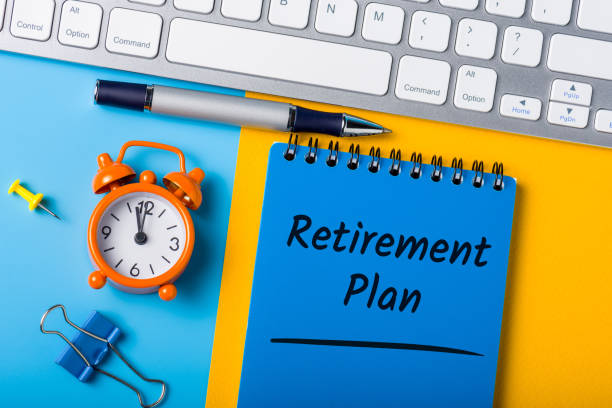Understanding the True Cost of Retirement
When planning for retirement, one of the most pressing questions is: “How much money do I need to retire comfortably?“ While there is no one-size-fits-all answer, various factors can help us determine a number that aligns with our lifestyle, health expectations, and life goals. The truth is, retirement planning requires a comprehensive understanding of expenses, income streams, inflation, and longevity.
Assessing Your Retirement Lifestyle
Determine Your Ideal Retirement Lifestyle
Your lifestyle is critical in how much you’ll need in retirement. Ask yourself:
-
Will you travel frequently?
-
Do you plan to downsize your home?
-
Will you relocate to a less expensive city or state?
-
Will you pursue hobbies that require financial investment?
These decisions significantly impact your retirement budget. A luxurious retirement lifestyle may require 80–100% of your current annual income, while a modest lifestyle may only need 60–70%.
Calculate Monthly Retirement Expenses
List all projected monthly expenses during retirement:
-
Housing: mortgage or rent, property taxes, insurance, maintenance
-
Healthcare: Medicare premiums, supplemental insurance, out-of-pocket costs
-
Utilities: electricity, gas, water, internet, phone
-
Food: groceries and dining out
-
Transportation: vehicle maintenance, fuel, insurance, or public transit
-
Leisure & Travel: vacations, hobbies, memberships
-
Miscellaneous: clothing, gifts, emergencies
Average retirees spend around $3,800 to $4,500 per month, but this varies based on geography and lifestyle.
The 4% Rule: A Baseline for Retirement Savings
What Is the 4% Rule?
The 4% rule is a general guideline used to estimate how much money you can withdraw annually from your retirement savings without running out. It assumes:
-
A 30-year retirement
-
A balanced investment portfolio (stocks and bonds)
-
Inflation-adjusted withdrawals
To use the 4% rule:
-
Multiply your desired annual retirement income by 25.
For example, if you need $50,000 per year:
-
$50,000 x 25 = $1.25 million needed in savings
This rule is not foolproof but provides a strong starting point for planning.
Consider Inflation and Rising Healthcare Costs
Inflation Impact
Inflation erodes your purchasing power over time. A $50,000 budget today may require $85,000 in 20 years at just 2.5% inflation. Always factor inflation into your retirement projections to ensure your savings maintain their value.
Healthcare Expenses
Healthcare costs typically increase with age and may account for a large share of retirement spending. According to Fidelity, the average retired couple may need $315,000 just to cover healthcare expenses throughout retirement. Consider:
-
Long-term care insurance
-
Health savings accounts (HSAs)
-
Medicare and supplemental coverage
Sources of Retirement Income
Social Security Benefits
Social Security replaces approximately 40% of the average worker’s pre-retirement income. The actual amount depends on your earnings history and when you claim benefits. Delaying benefits from age 62 to 70 can significantly increase your monthly payments.
Pension Plans
Though less common now, pensions still provide fixed monthly payments to some retirees. If available, include your pension as a guaranteed income source.
Investment Accounts
401(k)s, IRAs, Roth IRAs, and brokerage accounts can bridge the income gap. Ensure your portfolio is:
-
Diversified
-
Allocated according to risk tolerance
-
Balanced to generate stable income
Work with a financial advisor to create a tax-efficient withdrawal strategy.
Annuities
Annuities provide a guaranteed income stream for life or a fixed period. While not suitable for everyone, they can help manage longevity risk.
Longevity Planning: Prepare to Live Longer
The average American lifespan is increasing. Many retirees live well into their 80s and 90s, which means retirement may last 25–35 years. Planning for a long life requires:
-
A conservative withdrawal rate
-
Adjustments to your portfolio over time
-
Emergency reserves for unexpected costs
Don’t underestimate the importance of longevity planning in your retirement strategy.
Tax Considerations in Retirement
Your tax situation may change, but retirement doesn’t mean you’re tax-free. You may still owe taxes on:
-
Traditional 401(k) and IRA withdrawals
-
Social Security benefits (depending on income)
-
Investment income
Strategies to minimize taxes include:
-
Roth conversions
-
Tax-loss harvesting
-
Withdrawing from taxable accounts before tax-deferred accounts
A tax-savvy retirement plan keeps more money in your pocket.
Estimating Your Retirement Number: A Step-by-Step Guide
-
Estimate Annual Retirement Expenses: e.g., $60,000
-
Subtract Expected Income: Social Security + pension (e.g., $25,000)
-
Income Gap: $35,000
-
Apply the 4% Rule: $35,000 x 25 = $875,000 needed in savings
-
Adjust for Inflation and Healthcare
This is a dynamic calculation. Revisit it regularly, especially as you get closer to retirement.
Planning for Early Retirement
If you plan to retire early (before age 65):
-
Health insurance becomes a major consideration
-
You’ll need to stretch your savings for more years
-
You cannot access retirement accounts like 401(k)s without penalties until age 59½ (unless using specific strategies like SEPP)
Early retirees often need 150–200% of the amount needed for retiring at traditional ages.
Strategies to Increase Your Retirement Savings
If your current savings fall short of your retirement goals, don’t worry. Several smart strategies can help you build wealth faster and more effectively:
Maximize Employer Contributions
If your employer offers a 401(k) match, contribute at least enough to get the full match. This is free money that accelerates your savings. For example, a 50% match on up to 6% of your salary is a 3% bonus annually.
Contribute to Roth Accounts
Roth IRAs and Roth 401(k)s allow for tax-free withdrawals in retirement. Contributions are made with after-tax dollars, but qualified withdrawals are completely tax-free — a massive benefit if tax rates rise in the future.
Catch-Up Contributions
Once you turn 50, you can contribute more to retirement accounts:
-
Up to $30,500 annually to a 401(k) in 2025 (including catch-up)
-
Up to $8,000 annually to an IRA (including catch-up)
These contributions can close savings gaps significantly over time.
Reduce Unnecessary Expenses
Cutting back on non-essential expenses today allows for more aggressive saving. Eliminate:
-
Subscription services you no longer use
-
Impulse spending on gadgets or fashion
-
Frequent dining out
Redirecting even $300/month into your retirement account could result in hundreds of thousands of dollars over 20–30 years.
Optimize Your Retirement Timeline
Delay Retirement
Every year you delay retirement, you allow your savings more time to grow, reduce the number of years your money must last, and potentially increase your Social Security benefits. Working until 67 instead of retiring at 62 could boost your nest egg dramatically.
Part-Time Work in Retirement
Some retirees choose to work part-time in retirement, whether out of financial necessity or personal fulfillment. Even modest income from consulting, freelancing, or retail can significantly reduce the strain on your savings.
Downsize and Relocate
Consider downsizing your home or relocating to a more affordable area. States with no income tax (like Florida, Texas, or Nevada) or lower cost of living can stretch your retirement dollars further.
Selling a large home and moving to a smaller property can free up equity, reduce expenses, and simplify your lifestyle.
Emergency Fund and Unexpected Events
Don’t overlook the importance of maintaining an emergency fund in retirement. A reserve of 6–12 months of living expenses in liquid assets ensures you’re prepared for:
-
Medical emergencies
-
Major home repairs
-
Market downturns
An emergency fund gives you flexibility and protects your long-term investments from being tapped during unfavorable market conditions.
Work with a Financial Planner
Professional financial planners can:
-
Tailor your retirement plan to your exact goals
-
Adjust for inflation and changing markets
-
Build a tax-efficient withdrawal strategy
-
Help navigate Medicare, estate planning, and more
Investing in sound financial advice can yield long-term benefits and provide reassurance that you’re on the right path.
The Bottom Line: Build a Retirement You Deserve
Whether you’re decades away or just a few years from retiring, the key is to start now and stay consistent. Know your numbers, assess your lifestyle, track your expenses, and make thoughtful investment decisions.
Your ideal retirement isn’t just a number — it’s a vision that requires planning, discipline, and adaptability.
And remember, the sooner you start preparing, the better your chances of retiring comfortably.


